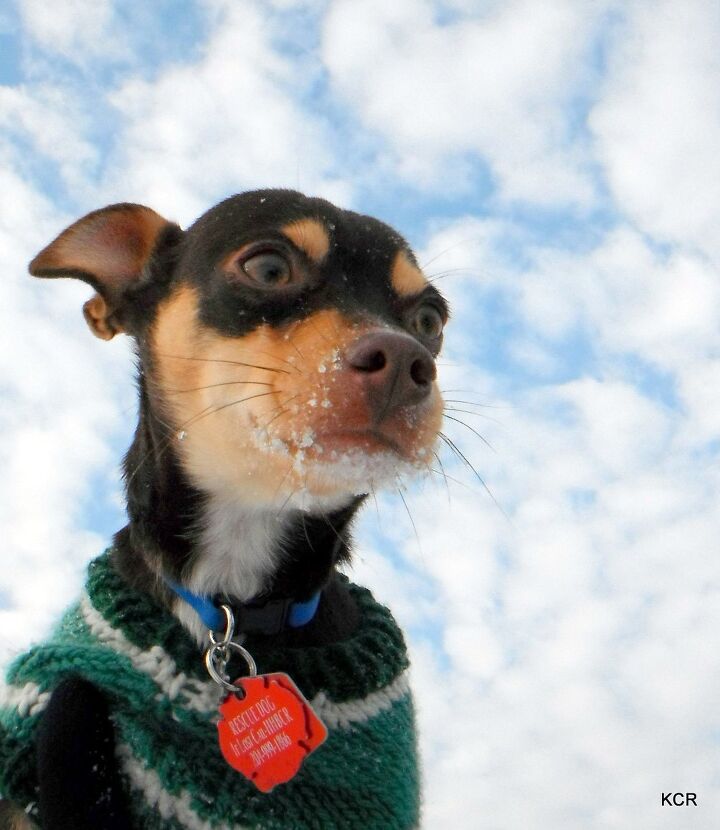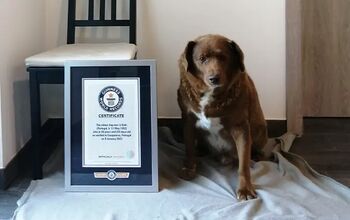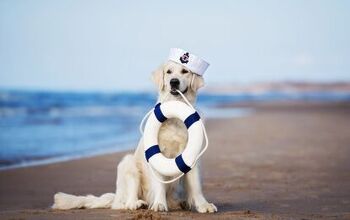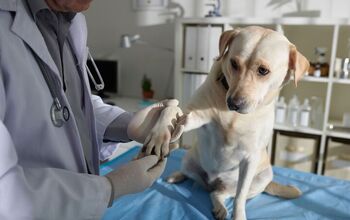Let It Snow: Getting Ready To Make The Most Of Winter With Your Dog

When I wrote an article on Urban Mushing, I was contacted by Kev Roberts, a skijoring, kicksledding, and dog-scootering aficionado who lives in Winnipeg, Manitoba, Canada (affectionately referred to as “Winterpeg”) . He runs his own blog on the joys of the sport and even teaches workshops for those who want to learn how to do it the right way. I’m very excited to learn more about it from an expert in the coming weeks. Who knows – he may even inspire you to take up skijoring!
I have to admit, I am a winter person. I love the snow, I love the crispness in the air. I also love to watch my dogs fly through the snow and dig for their toys.
Winter time offers it share of challenges, as well as opportunities for you and your dog. In this series of blog posts, I will be covering some winter activities and safety tips for your dog.
There are a few things you can do to make sure your dog has fun out in the snow. Let’s get started with their feet.
In the winter, dogs feet need special attention and care. First, check your dog’s foot pads for cracks or splits. Just like people’s hands, a dog’s pads can dry out in the winter time. The splits and cracks, if left on their own, can grow painful and infected. If you see cracks or tears in the pad, and they are superficial, as in no blood, then you can use a paw wax, to moisturise and treat the paw pad. Mushers Secret is one such product. Apply it a few times a day, and only enough to ensure that the foot pad becomes soft and can heal. Most of the wax products on the market are not going to cause any harm to your dog if it happens to be ingested. But read the label to be sure!
Keep your dog off the furniture as well once you have applied the wax, as it can stain fabrics.
If your dog has more serious or deeper cracks, you can use Derma Gel, which is available from your veterinarian. Derma Gel will give the crack a protective barrier, as well as promote quick healing.
If your dog sprouts little toupees between his toes, then you need to book an appointment with your groomer!
Any hair on the foot comes in contact with the snow. As the dogs paws press down into the snow, it melts a little bit, and sticks to the dogs feet. With each step, the snow builds up more and more. These ice balls form up in between the dog’s toes, and spread the toes as they walk. Not fun!
To prevent this, take your dog in to the groomer to have the hair trimmed between the toes, and around the pads. Depending on how fast your dog’s hair grows, and how long your winter is, your dog might need this done a few times over the winter.
Dog boots offer protection for your dog’s feet. Protection not only from the cold, but from chemical de-icers and salt used on the paths and sidewalks where you walk your dog.
Look for a boot that will suite your climate. A good fitting dog boot allows for enough room for the toes to spread as the dog walks. This gives your dog a good grip, and allows for a natural gait. A good fitting boot will come up high enough on your dog to stay on, and will stay tight on the dog’s leg. A loose boot only allows snow or salt to get in, and stay in. If you have ever had a pebble in your shoe. You know how annoying this is,
Look for a dog boot that is suited to your climate and the conditions your dog will be in. If you have wet winters, a rubber boot is the best protection. Fleece is well suited to dry winters, but keep an eye on it, if you are out for long walks with your dog, the fleece may become wet, and need to be swapped for a dry boot.
Dog boots aren’t just for little dogs. When the mushers of the Iditarod leave Fairbanks, they are required to have enough booties for their entire team. Booties do more than just keep a dogs feet warm; they offer a layer of protection against whatever winter has to throw at them.
There are two kind of coats, the coat your dog is born with, and the coat you buy your dog! Both coat types come in a wide variety of styles and sizes. Some dogs are born with very thin coats, the hair may be long, or short, but there is no undercoat. Other dogs are double coated, which means they have an under layer of hair, which helps insulate them against the cold.
Some dogs will need you to buy them a coat. Puppies and older dogs will feel the effects of the cold sooner than the majority of adult dogs. Your old friends, and very young friends will benefit from a coat, and will also need less time out doors as well. Smaller dogs, and dogs with very little body fat will also benefit from a coat. As will dogs with single coats (no under coat), or thin natural coats.
If you opt for a coat for your dog, it’s pretty similar to shopping for a coat for yourself, think of what your dog’s needs are. If your dog is a sidewalk stroller type, a coat that covers the back, and allows the legs to move freely will be important. If your dog is a deep snow adventurer, a coat which fit snugly against the chest will aid in keeping snow balls from forming against the chest.
Your best bet is to take your dog into the pet store with you, and try on a few styles. Looking for the best fit, that allows the legs to move properly, and offers protection from the weather.
If your dog is dog is a young dog with some growing to do, or a dog who has frequent trips to the groomer, you may invest in more that one dog coat, or look for one that is adjustable.
No matter your dog’s coat type, a good brushing will help keep the coat free from dead hair. It will also serve to promote healthy skin, which aids in the fight against dryness and dander during the cold winter months. So spend some quality time with your dog and a brush!
Winter is such a beautiful time of year, and with a few small steps, you and your dog are ready to enjoy yourselves out in the Winter Wonderland! Enjoy yourself, and your dog!

Kevin Roberts lives for adventure. Together with his pack of rescue dogs and his husband, he spends as much time outdoors as possible. Kevin lives by the motto: "Get outside and play with your dogs!
More by Kevin Roberts

























